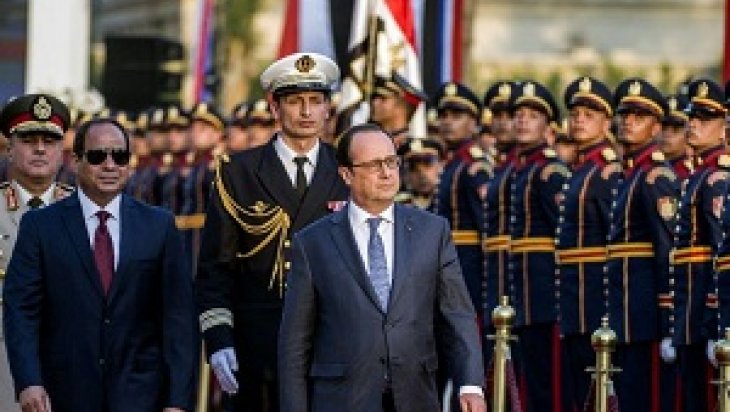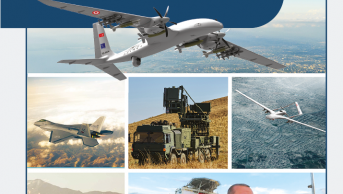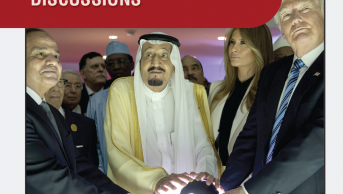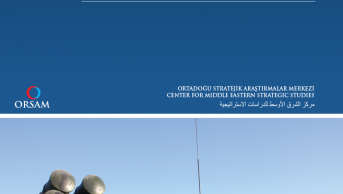Egypt’s Military Relations in the post-Mubarak Period

After the Arab Spring reached Egypt, the military relations of the latter have been quite diversified, especially following Hosni Mubarak’s resignation. The military relations that this country enjoyed with the USA for years were interrupted by the coup for a short time and such actors as France and Russia came to the forefront in this process. When the content of the weapons systems that Egypt procured is considered, it is seen that excess materials are purchased and they are procured through practices compatible with junta governments.
What Kind of Military Relations Did Egypt Conduct under Mubarak’s Regime?
A military structure,oriented toward the Soviet Union, was the case in Egypt until Camp David accords in 1978. It should be noted that Hosni Mubarak, who was elected as Egypt’s President in 1981 after Anwar el-Sadat was assassinated, participated in the aviation courses of the USSR.
Egyptian army started to shape its political vision on the Western axis due to the close contact with the USA following the Camp David order. Possessing a wide range of Soviet ammunitions from aircrafts to tanks, Egyptian army gradually began to add US ammunitions in its inventory after Camp David order. Military assistance constitutes the majority of the US assistance ($1.3 billion per year) provided to Egypt. The number of US ammunitions started to increase after 1979;Abrams tanks, F-16 aircrafts, AH-64 Apache attack helicopters andPerry and Knox frigates were prominent in the inventory of Egyptian army. In addition to the US military supply, European states also sold arms and equipment to Egypt after Camp David order.
Egyptian Army in Post-Mubarak Period
The 30-year political career of Hosni Mubarak ended on 11 February 2011 after the Arab Spring which broke out in Tunisia and reached Egypt. The Muslim Brotherhood started to play a prominent role in Egypt’s political arena in the post-Mubarak period, which led Mohamed Morsi, the candidate of the Muslim Brotherhood, to win the presidency elections in Egypt. Having an Islamist past, Morsi’s presidency raised concerns both in the West and in Israel, with which Egypt has artificially lived in peace since 1979. Indeed, Morsi’s term in office did not last long and he was overthrown with a military coup by the Minister of Defense and Chief of General Staff Abdel Fattah el-Sisi who was assigned by the president himself.
Egypt was about to purchase 10 ANKA unmanned aerial vehicles from Turkey as a result of the convergence between Egypt and Turkey during Morsi’s presidency. However, the mentioned project was shelved due to the hostility between Egypt and Turkey,since Turkey sided with democratically elected Morsi after the military coup in Egypt.
The US government took a decision in October 2013 following el-Sisi’s military coup. According to this decision, the shipment of 12 F-16 aircrafts, 125 Abrams tank kits and Harpoon missiles to Egypt was suspended. However, French President Hollande and Egypt held talks,whereby Egypt putprocurement orders,which would mark a major support to the French economy.
France and Russia as Egypt’s Important Partners
Egypt started to become an important defense industry market for France under el-Sisi’s rule,who came into power by overthrowing Mohamed Morsi with military coup. After the military assistance between the USA and Egypt was temporarily suspended, France supplied the military vehicles and equipment that Egypt needed. This shows the improving military relations between these two countries.
European states imposed sanctions on Russia after it annexed Crimea in 2014. Therefore, due to intense pressure, François Hollande cancelled the agreement which was concluded in order to sell 2 Mistral-class amphibious assault ships to Russia in 2008. However, with the effect of the continuous conflict in the Middle East and the present chaos, France easily agreed with Egypt about the sale of these two ships. These two ships will considerably increase the amphibious assault capacity of Egyptian navy in the sea basin in proximity including the Mediterranean Sea and the Red Sea. It is planned that these ships will be supported by the KA-52 attack helicopters that will be received from Russia.
The burgeoning military relations between France and Egypt are not limited to Mistral ships. A 5.6 billion-dollar agreement was signed between two countries in February 2015. According to this, 24 Rafale warplanes, 1 FREMM-class multipurpose frigate and various MBDA-manufactured advanced ammunitions would be sold to Egypt. The first 3 planes were delivered on 20 July 2015 while the second part of 3 planes was sent on 29 January 2016.
In March 2016, Egypt and France performed a joint military Exercise called RAMSES on and off the coasts of Alexandria. Air and naval forces of both sides participated in the exercise. It can be considered important due to Egypt’s terror mobility in Sinai and Libya as well as France’s attitude towards Syria.
The shipment that the USA had temporarily suspended was released as of April 2016 on the grounds that DAESH terror, which had spread in Libya, posed a threat. There have recently been a series of developments. In April 2016, France took actions to meet Egypt’s needs for military satellite communications systems. In June 2016, the first Mistral-class amphibious assault ship was delivered from France and the second is expected to be delivered in September 2016. On 8 June 2016, it was announced on Egyptian state television that an agreement was concluded with Russia including S-300 air defense systems, President-S model defense system used in aircrafts, 46 Mig-29 warplanes and 29 Sukhoi warplanes of unknown model.
Threat-based Assessment of Egypt’s Recruitment
While the radical changes in the security architecture and war industry push the states to closely follow this transition period, those who have difficulties in catching up with the transition continue to design their security architecture and army, based on conventional understanding. During the defense planning, it should be taken into consideration that the plane, tank, helicopter or ship that a country choosescannot be manufactured in a short time by the defense industry. The contemporary threats are dynamic and have gained a hybrid characteristic. Therefore, it is important that a country’s choices be meticulously made and well-planned,so that it can use resources efficiently and gain a sustainable capacity to fight threats.
Egypt has been an important actor in the Middle East for long years both owing to its population and its conventional military power. However, conventionally speaking, it is possible to explain Egypt’s reasons to buy conventional weapons even though it is not under any kind of external threat,with reference to the structure of its security sector. As in any state where democratic values are not internalized and defense reforms are not made, Egypt’s security sector including the military, police and intelligence encounter serious problems. At this point, there are not such principles as accountability, transparency and audit in Egypt considering the position of the military in politics.It can be said that the weapons are purchased to satisfy French and Russian defense sectors in order to maintain the legitimacy of el-Sisi rather than to meet the need for arms and ammunitions.
Finally, there are still two urgent issues concerning Egypt’s national security. The first issue is that Egypt neighbors Libya, which became the new center of DAESH militants after Iraq and Syria,since Libya is on the verge of a failed state. The second threat is the terror groups in Sinai. It is obvious that the fight against terrorism in Sinai cannot continue with a conventional military organization. Since it is not possible to launch an amphibious operation against terror organizations, it may be speculated that the Mistral-class ships would be of limited utility. Furthermore, it can be argued that FREMM-class multipurpose frigate is a timely choice, considering the recently increasing mobility in the energy industry in Eastern Mediterranean.









